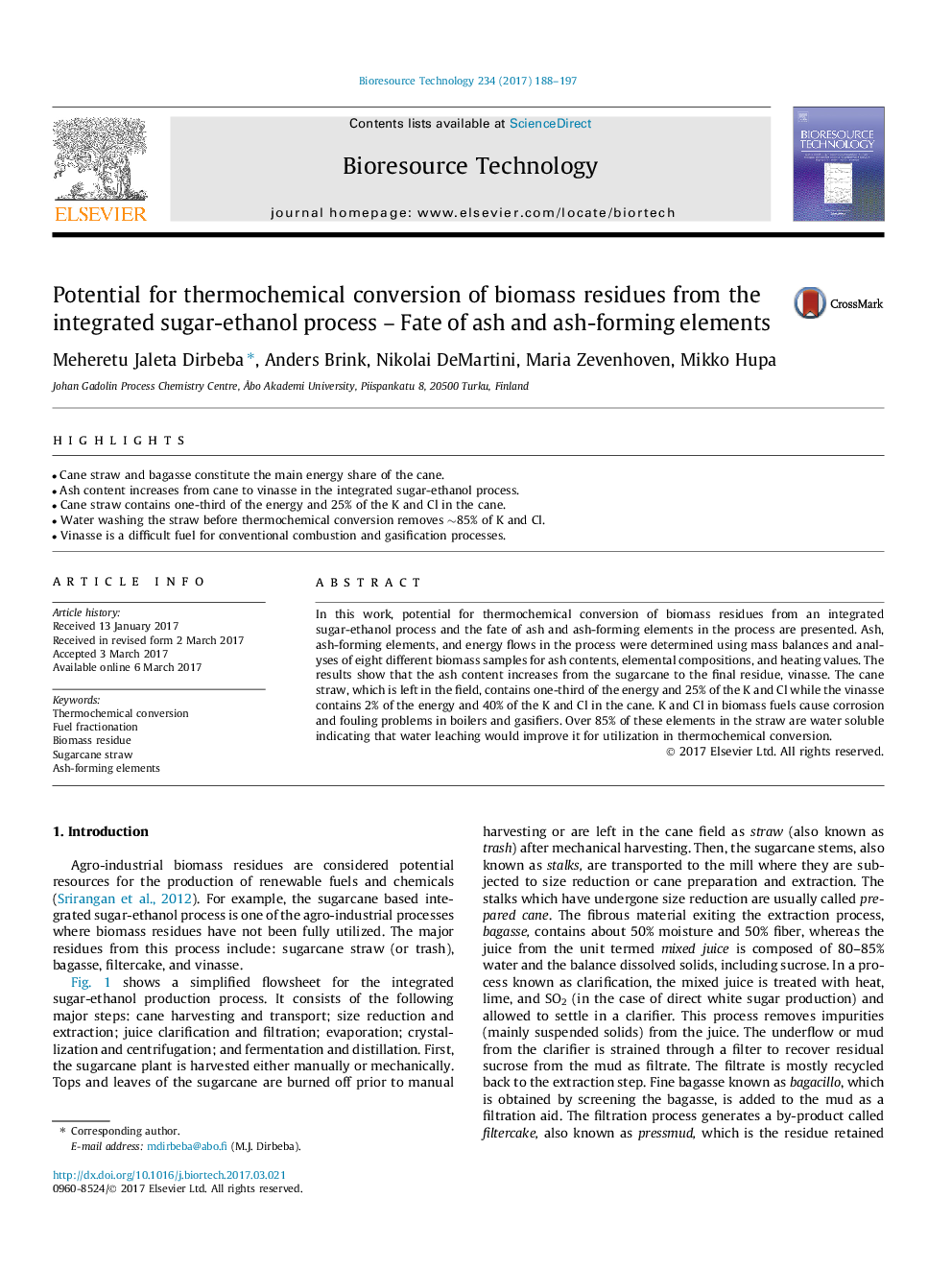| Article ID | Journal | Published Year | Pages | File Type |
|---|---|---|---|---|
| 4997342 | Bioresource Technology | 2017 | 10 Pages |
â¢Cane straw and bagasse constitute the main energy share of the cane.â¢Ash content increases from cane to vinasse in the integrated sugar-ethanol process.â¢Cane straw contains one-third of the energy and 25% of the K and Cl in the cane.â¢Water washing the straw before thermochemical conversion removes â¼85% of K and Cl.â¢Vinasse is a difficult fuel for conventional combustion and gasification processes.
In this work, potential for thermochemical conversion of biomass residues from an integrated sugar-ethanol process and the fate of ash and ash-forming elements in the process are presented. Ash, ash-forming elements, and energy flows in the process were determined using mass balances and analyses of eight different biomass samples for ash contents, elemental compositions, and heating values. The results show that the ash content increases from the sugarcane to the final residue, vinasse. The cane straw, which is left in the field, contains one-third of the energy and 25% of the K and Cl while the vinasse contains 2% of the energy and 40% of the K and Cl in the cane. K and Cl in biomass fuels cause corrosion and fouling problems in boilers and gasifiers. Over 85% of these elements in the straw are water soluble indicating that water leaching would improve it for utilization in thermochemical conversion.
